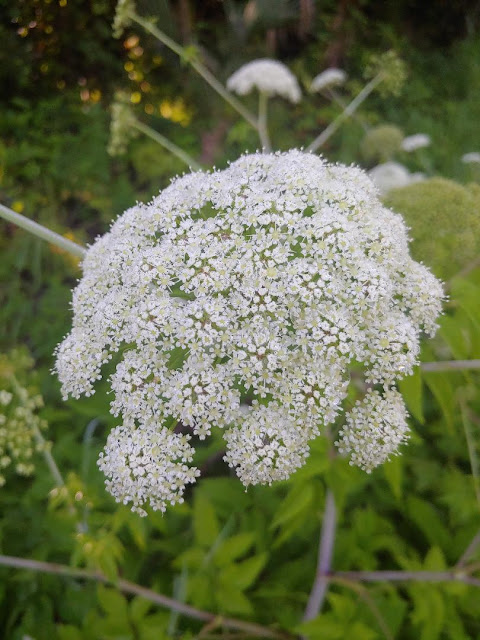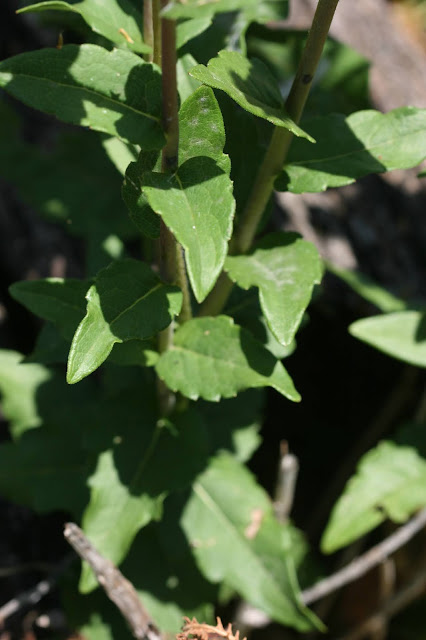I've picked a date for my next Open House - Saturday, May 22, 9 am - 1 pm
1648 Paragon Place, Holiday, FL 34690
Below is the list of native wildflowers that I will have for sale. I hope you can join me and take a few of these home with you.
Open House – Hawthorn Hill Spring
2021
Plants marked as (***) in very limited numbers/Plants
marked as FALL will be ready later
this year
All 4” pots are $4. Very few in 1 gallon pots are $8.
Wildflowers Host, SFL native, Wetland
Allium canadense Meadow
garlic***
Amorpha crenulata Crenulate
leadplant H?
Amorpha fruticosa Leadplant H
Amorpha herbacea Sandhill
leadplant H
Ampelaster caroliniensis Carolina
aster W
Arnoglossum floridanum Florida
Indian plantain
Arnoglossum ovatum var. lancifolium Lance-leaved Indian plantain W
Asclepias incarnata Pink
swamp milkweed H,
W
Asclepias perennis White
swamp milkweed H,
W
Asclepias tuberosa Butterfly
milkweed H
Berlandiera subacaulis Greeneyes
Capsicum annuum Bird
pepper SFL
Clematis baldwinii Pine
hyacinth
Clematis crispa Fairy
hats W
Clematis reticulata Netted leaf
leather-flower
Crotalaria rotundifolia Rabbitbells H?
Eryngium aquaticum Blue
button snakeroot W
Eryngium integrifolium Blue
button snakeroot W
Eryngium yuccifolium Rattlesnake
master
Garberia heterophylla Garberia***
Helianthus radula Rayless
sunflower***
Hibiscus coccineus Scarlet hibiscus (White & Red) W
Hibiscus grandiflorus Pink
hibiscus W
Hibiscus moscheutos Crimson-eyed
rosemallow W
Hibiscus poeppigii Poeppig’s
rosemallow*** SFL
Jacquemontia pentanthos Skyblue
clustervine SFL
Kosteletzkya pentacarpos Virginia
saltmarsh mallow W
Liatris aspera Tall
blazing star
Liatris elegantula Elegant
blazing star
Liatris gracilis Graceful
blazing star
Liatris savannensis Savanna
blazing star
Nemastylis floridana Fall
ixia/Celestial lily ($10 each)
Ocimum campechianum Native
basil SFL
Oclemena reticulata Pinebarren
aster
Penstemon multiflorus White
beardtongue
Rudbeckia hirta (southern variety) Black-eyed susan
Rudbeckia laciniata Cutleaf
coneflower
Rudbeckia mohrii Mohr’s
coneflower W
Rudbeckia mollis Softhair
coneflower
Rudbeckia triloba Brown-eyed
susan
Ruellia caroliniensis Wild
petunia
Salvia coccinea Red
salvia
Salvia lyrata Lyre-leaved
sage
Scutellaria incana Common
skullcap
Senna ligustrina Privet
cassia*** H
Silphium asteriscus Rosinweed
Solidago odora chapmanii Chapman’s
goldenrod
Solidago stricta Wand
goldenrod
Stokesia laevis Stoke’s
aster
Symphyotrichum chapmanii Chapman’s
aster H
Symphyotrichum concolor Silver
aster H
Symphyotrichum elliotii Elliot’s
aster H
Symphyotrichum georgianum Georgia
aster H
Symphyotrichum pilosum White
oldfield aster H
Symphyotrichum undulatus Wavy-leaved
aster H
Tephrosia angustissima coralicola Coral hoarypea H?,
SFL
Thalictrun revolutum Wavy-leaved
meadow rue
Tiedemannia filiformis Water
dropwort W,
H
Vernonia angustifolia Tall
ironweed
Vernonia gigantea Giant
ironweed
Vernonia novaboracensis New
York ironweed
Viola sorarria (white flowers) Common wood violet H
Grasses
Andropogon ternarius Splitbeard
bluestem H?
Andropogon virginicus var. glaucus Chalky bluestem H
Chasmanthium laxum Slender
woodoats
Sorghastrum apalachicolense Apalachicola Indiangrass H?
Sorghastrum nutans Yellow
Indiangrass H
Sorghastrum secundum Lop-sided
Indiangrass H?
Woody Plants
(Small – 4” pots)
Carya floridana Scrub
hickory***
Quercus chapmanii Chapman’s
oak***
Sideroxylon lanuginosum Gum
bully***
Sideroxylon tenx Tough
bumelia***
Nonnative plants
Everglades tomato H,
SFL
Blue chai butterfly pea*** H












































